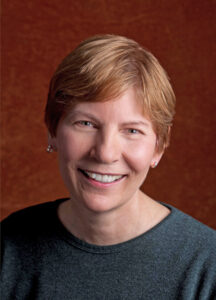By Kathy Berken

Eight-year-old Grace’s labyrinth blew up this week. I know; it is hard to imagine. She hoped beyond hope that it would have made it through the kiln intact. But something went wrong in the process. The clay was too dry, there were unnoticed air bubbles, or a piece was patched in the making, and the intense heat caused the explosion.
Disappointment doesn’t even reach what she must have felt when she saw her clay labyrinth (think half-inch-thick dinner plate size) — the one she made with such care with her own hands, molding the path with her finger just right — in shards on the bottom of the metal cart in Sister Jean Nelson’s pottery shop that evening. Grace ran to her mom and hid her tears.
The residents of Duluth, Minn., never wanted their city ruined by recent rainstorms, but the floods drowned their hopes when roads collapsed, bridges broke apart, and city streets became raging rivers.
“The results are positive” was not the line I hoped for from a surgeon at a Quad-Cities clinic 12 years ago this summer after he opened my file, handed me a tissue and walked out the door to leave me alone with a nightmare. His four words were a shove into the abyss where in the blackness I fell headlong into a stage-four breast cancer diagnosis.
Hope. What a concept! It’s the second of the theological virtues, love being the greatest (1Cor. 13:13). Likewise, “faith is the substance of things hoped for, the evidence of things not seen (Heb. 11:1).
Tell that to Grace who is learning how to handle disappointment. Tell it to the citizens of Duluth who lost everything. Tell me I should have had hope as I sat stunned, wondering if I would die soon. Tell it to the Hebrews abandoned in Jerusalem after the Babylonian exile. We are all what Lamentations is about. After blaming God for pretty much everything, the author of the Old Testament poem finds hope only at the end, writes Kathleen O’Connor in her “Lamentations and the Tears of the World.” “God’s seeing vigilance remains the hope of the people (99).” Even so, they believed God had forsaken them.
Ask Mary Oliver the meaning of hope. Her poem “When I am Among the Trees” speaks of her “being distant from the hope of myself, in which I have goodness.” Ask statesman Thomas More how he could hope until the end that his life would have meaning even though his friend Henry VIII never relented and had him killed for disobedience to the throne.
Theologian Thomas West says in “Jesus and the Quest for Meaning” that hope is the “twin to trust, and both together form a bridge between the cognitive . . . and the affective . . . aspects of the spiritual self (172).”
Abandoned hope leads to despair, but Grace won’t go there. She will make another labyrinth. The people of Duluth will rebuild, as did the people of Jerusalem centuries ago. Successful surgery and chemo gave me a ticket to live and the gift to appreciate the small stuff. More’s belief in his legacy as a man of integrity offered hope for future generations. Oliver finished her poem with the hope the trees gave her, “and you too have come into the world to do this, to go easy, to be filled with light, and to shine.”
Hope is hanging on through tears, wailing and disappointments, trusting that the Light of Christ does see us through raging floods, incomprehensible exiles, cancer-ridden death threats, and broken labyrinths.
(Kathy Berken has a master’s degree in theology from St. Catherine University, St. Paul, Minn. She lived and worked at The Arch, L’Arche in Clinton (1999-2009) and is author of “Walking on a Rolling Deck: Life on the Ark (stories from The Arch).”)







